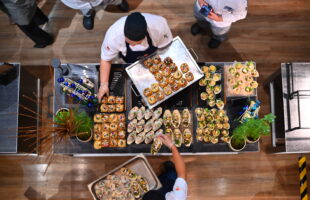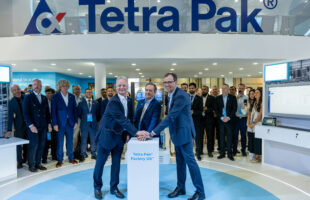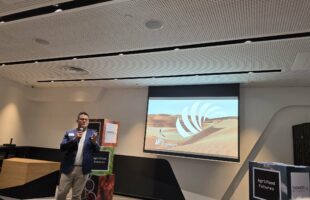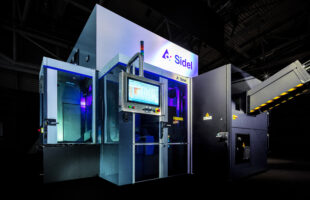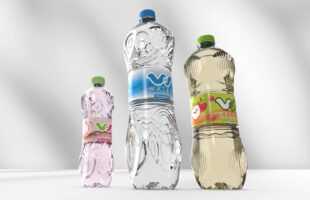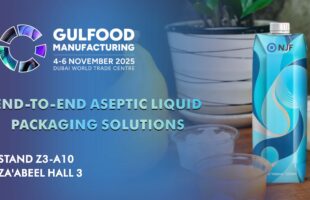
Courtesy of Алекке Блажин/Pexels
The market for products based on alternative proteins is booming. Whether flexitarian, vegetarian or vegan, more and more people are choosing these foods for sustainability reasons. What could be more obvious than to also opt for a more sustainable solution when looking for the right packaging? Here is a short overview of modern, safe, and in many cases, resource-saving innovations from the packaging industry.
Booming market
Alternative proteins are among the major current food trends. The global plant-based meat market was valued at approximately €5 billion in 2021 and is expected to grow at a compound annual rate of 19.3 percent from 2022 to 2030. This mainly stems from a large number of flexitarians, who at least occasionally try to do without meat. Important reasons for changing their eating habit are animal welfare, the positive impact on the environment, and slowing down climate change.
As such, it makes sense that the packaging of plant-based foods also adheres to the critical eye of these consumers with regard to sustainability. Packaging specialist SEALPAC, the global supplier of high-tech tray sealers and thermoformers, has been dealing with this question intensively for a long time.
As Marcel Veenstra, Marketing & Communications Manager at Sealpac International, explains:
“In designing sustainable solutions, it is important not to forget the original function of packaging, which is to protect the product to keep it fresh for longer. By contributing to less food waste, we also support the environment. This is why our motto can only be: as little plastic as possible, as much as necessary.”
Under this motto, in close cooperation with customers and material suppliers, several innovations have recently emerged for alternative proteins designed to provide optimal product safety and prevent food waste whilst being as resource efficient as possible.
TraySkin®
A true innovation, and only recently on the market at Migros in Switzerland, are plant-based eggs made of soy proteins. They keep up with the hen’s egg in terms of appearance but are particularly sensitive. Here, TraySkin® technology developed by SEALPAC offers reliable protection.
Furthermore, each product is individually sealed with SEALPAC’s OnTrayCut system, which was specially developed for the vacuum skin packaging process. In this way, each of the ‘eggs’ is well protected and retains its freshness over the entire shelf life.
Rico Ménard, Head of Packaging Development at the Swiss manufacturer Micarna SA, explains:
“The best packaging is the one that offers optimal product protection and at the same time minimal use of materials.”
eTray®
Together with Jaun Neoform GmbH, SEALPAC launched a plastic-reducing tray for Modified Atmosphere Packaging on the market, which is perfectly suited for plant-based products, such as vegan minced meat or cevapcici.
This so-called eTray® consists of a cardboard base that can be printed on both sides. It has a thin plastic inlay that purely provides the sealing and barrier function. This stable and reliable tray reduces the plastic content by up to 40% compared to conventional trays. After use, the cardboard base and plastic inlay are easily separated to allow for sustainable disposal and recycling.
FlatSkin®
The FlatSkin® system also offers less plastic and more fibre. Products like plant-based burgers or steaks are skin packaged onto a flat cardboard carrier, which is laminated with an ultra-thin polymeric layer. This means that those products can be presented in a visible and attractive way, even if displayed in a vertical position at retail.
The liner can afterward easily be removed from the cardboard carrier by means of a special peel tab to allow for separate disposal and recycling. This makes FlatSkin® highly convincing from an ecological point of view. In addition, the ability to print the cardboard carrier on both sides opens up excellent branding opportunities and makes it possible to provide consumers with information about the product, packaging, and disposal.
FlatMap®
Renewable materials and plenty of room for communication that is what characterise FlatMap®, a perfect solution for packaging vegan cold cuts. As with FlatSkin®, a flat cardboard carrier laminated with an ultra-thin layer of plastic is used.
The product is sealed under a modified atmosphere with a highly transparent top film, which can be easily removed from the cardboard. Afterward, the film can be placed over the product again, where the edges are pressed against the carrier to provide excellent reclosability.
Due to the tight-fitting top film, the packaging contains less oxygen than conventional packaging systems, which prevents the product from drying out. After use, it is possible to separate the plastic and cardboard components completely, therefore allowing full recyclability of these materials.
EasyLid®
In the delicatessen segment, trays with reclosable lids are well established, offering both product protection and convenience. They create a safe and attractive solution for vegan spreads, such as hummus or guacamole.
Today, the EasyLid® system, developed by SEALPAC in close cooperation with Naber Plastics in The Netherlands, makes it possible to create a lid functionality without requiring an actual snap-on lid. This solution combines an injection-moulded tray produced by Naber Plastics, with a unique traysealing technology by SEALPAC.
The tray has a common sealing edge and an additional ring. A peelable seal is applied to the regular sealing edge, whereas the additional ring is hermetically sealed in the same process. Upon opening the tray, the lid function is automatically activated.
As no additional lidding system is required, less personnel and floor space are needed. EasyLid® uses significantly less material than comparable packaging. Furthermore, it saves on transport and storage costs whilst reducing CO² emissions. By using 100 percent polypropylene (PP) for the EasyLid® trays, the pack can be recycled after use.
Flexible film vacuum packaging
“As you can see, there is a variety of modern packaging solutions available that combine optimal product protection with increased sustainability, making them ideally suited for trendy products like alternative proteins. In many cases, however, well-established packaging systems can also be made more sustainable by using particularly thin film or by using recyclable mono-materials, such as PE or PP”, says Marcel Veenstra about the example of classic vacuum packaging.
This standard thermoformer pack, made of flexible top and bottom film, is a cost-effective solution for products packaged under vacuum, for example, vegan sausages. For a long time already, this solution stands for maximum product safety and maximum shelf life of fresh food. “If you replace the conventional, multi-layer materials with modern, flexible films made of mono-materials, you can create a recyclable packaging concept”.
Marcel Veenstra concludes: “Our high-tech traysealers and thermoformers are designed to reliably process thin films and innovative material compositions. In this way, food manufacturers can use their packaging to do justice to the desire for sustainability that drives many consumers when they consciously choose plant-based products.”


